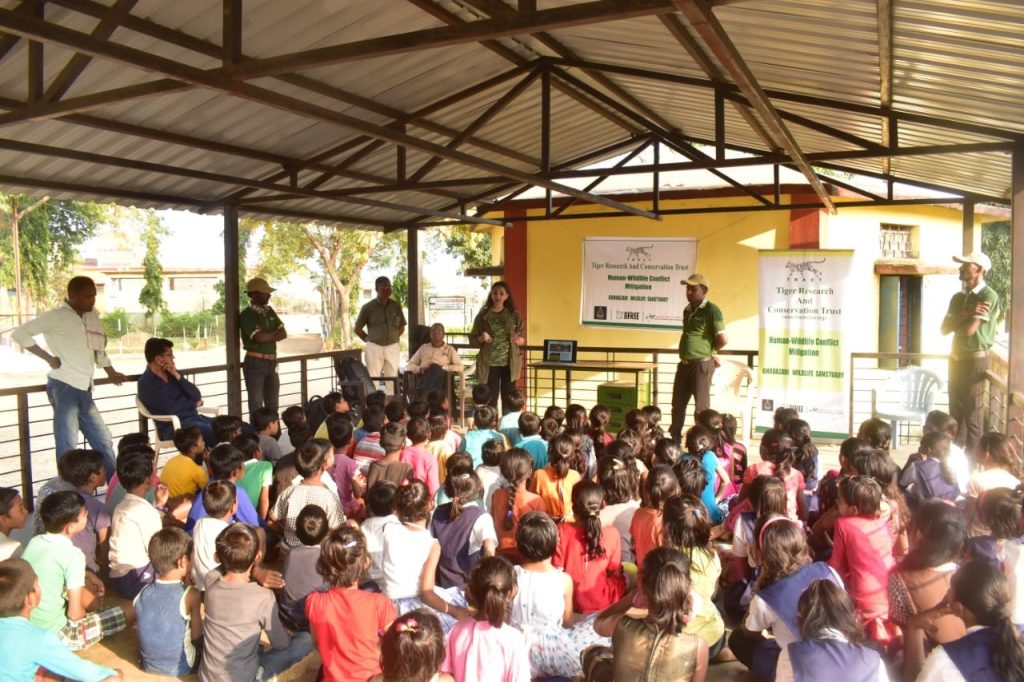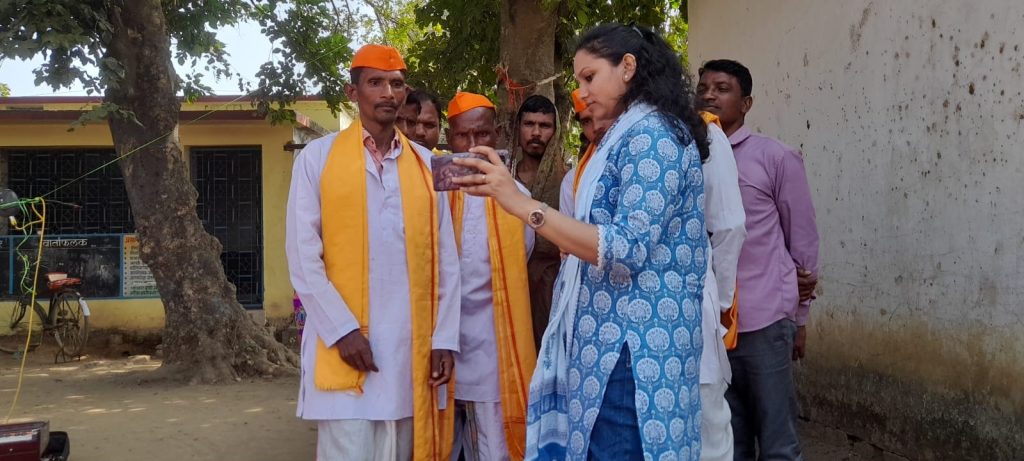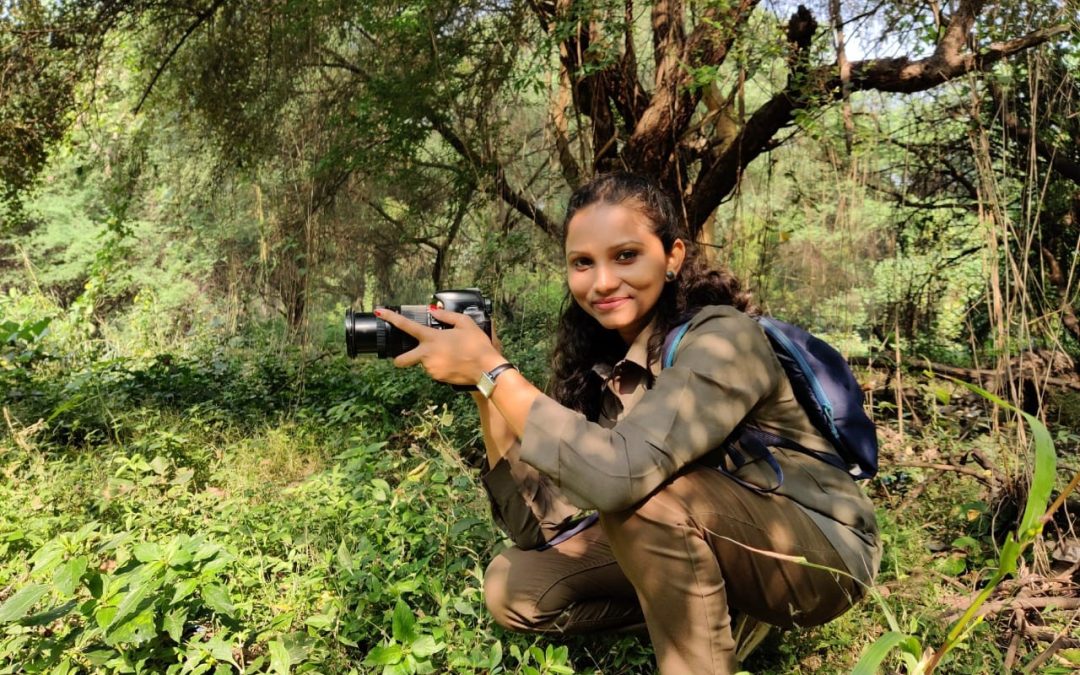From organising street plays for disseminating conservation messages to managing field teams, Namita Mane from SLTP partner Tiger Research and Conservation Trust (TRACT) gives us an insight into how she is working actively with local communities to promote coexistence.
- Tell us more about yourself and what got you interested in working for the environment.
I have completed my masters in Environmental science from the Institute of Science Government College, Nagpur. I took inspiration from my cousin, an environmental engineer working as a senior scientist in Air Pollution Control (APC) division, NEERI at Nagpur. Throughout my college days I was interested in environmental concerns, and on joining an NGO as a volunteer, I could explore different forest regions and gather various perspectives. When we did some activities for students for the first time, I was happy because I got to communicate with students which was directly related to my responsibilities as a lecturer. My communication skills with the students were appreciated by locals & the foundation. I joined Tiger Research and Conservation Trust (TRACT) to convert my passion for working for wildlife into a career and I have been fortunate to get an opportunity to work towards addressing human wildlife conflict.
Going for safaris in the forest contributes towards tourism, but taking steps towards conservation should be the way of life and it is important to be one with nature.
- How does a typical day unfold for you / Tell us a bit about your daily tasks and conservation work
At TRACT, my work involves working with the field teams who are working for conflict mitigation in multiple forest landscapes. I coordinate between the office and these teams and also between multiple teams in the field to ensure smooth working for all. I also participate in school programs where we interact with the students as well as teachers.

Namita interacting with students, at Zilha parishad primary school, Mangrud, Nagbhid
Programs with the students always give us an opportunity of creating awareness within the other members of local communities as well. Students usually remember the things they learn at school. They share these learnings with their family members, friends, and relatives. Their ability to listen carefully during the programs and grasp everything we are trying to tell makes this activity successful. Through these school programs, we are also able to connect with the teachers, who are the pillars and first source of information for these students. Positive results can be seen as their knowledge about the importance of forests, wildlife species is observed and they are inspired to avoid plastic, clean their school premises & homes, and take necessary actions when they travel through forest areas. Our aim is to make the next generation more capable to avoid conflict and mitigate the conflict situations that they are facing on a regular basis.
Followed by this, we show them success stories on tiger conservation and presentations on large carnivore identification. We also try to create a bond & network between the local community and the forest department.
- What do you love about your current job
It’s very satisfying to be able to bring improvements in the lives of people who live in forest fringes. In turn, their tolerance increases and they co-exist better with wild animals. Studying wildlife gives us a deeper understanding of how nature works towards providing us with all the resources we will ever need. This work with nature is what makes all the hours of work worth it.
- Could you share a key learning or experience from the field
Our field activities are more interesting than the theory ones. We cover all topics regarding forests, wildlife, conflict, human actions, attacks, animal behaviour, mitigation measures, and co-existence in one program. The information provided is easy to understand and helps us communicate to the local community that they are living in the most enriching places, close to nature. We disseminate the information through plays I have used my magic of words in the script and included all points mentioned earlier through various characters. I utilized my extracurricular knowledge to provide a large chunk of information with an angle of entertainment as script writing is kind of my passion. During practice sessions, I was surprised that the villagers (local actors including primary response team members) were enjoying the dialogues and trying to deliver the meaning as it was supposed to be.

Namita is directing a play with local participants
We also used musical instruments for better impact. When our ears and eyes both are working at the same time, we see light first and then feel the music. The sense of sight and hearing become active and makes the brain grasp what is being delivered to them. Our main aim is to gather the locals & make them see that entertainment could be a source of knowledge & experience too. In the script, I have focused on the daily practices of villagers and how it affects the ecosystem directly & indirectly. We try to communicate that when individuals go into the forest alone, attacks happen because of lack of being alert, fear, myths & awareness. We use various catchphrases from the local languages and daily conversations to create awareness within the local communities. The forest department appreciates our efforts and advises us to continue more programs like this. The positive response from the local communities and the appreciation from the department indicates that we are indeed going in the right path.
- Do you feel optimistic about the future of the natural environment of India/ Have you experienced a positive change regarding conservation in your area
The only constant is change, but no change is instant. We can bring positive changes only if we work towards our goals consistently. It is worthwhile having worked close to nature for 7 years now. I am proud to be a part of all the social awareness and preserving the sanctity of wildlife and its habitat. When I see the school students and their energy towards learning how they can make co-existence work, I can say that they will protect the environment & take care of the co-existence in the coming years. The wildlife will be better protected & our efforts will be more fruitful. The forest staff has become much more supportive and appreciates all that we do, and the locals from the fringe villages are now more aware & are trying to avoid conflict at their own individual levels. They have been reducing their dependency on the forest & utilising the schemes for alternate livelihood options. Students are following the laws of conservation and are avoiding plastic bottles, tiffin & bags. For livelihood sources, we now have a variety of options and resources that will reduce dependency on forests and at the same time provide a safer and healthier co-existence. The opportunity to network and interact with like-minded individuals through wonderful platforms like SLTP will be helpful for individuals working in the background. The new generation is listening and implementing the knowledge they have learned. So yes, I am optimistic about the future.

